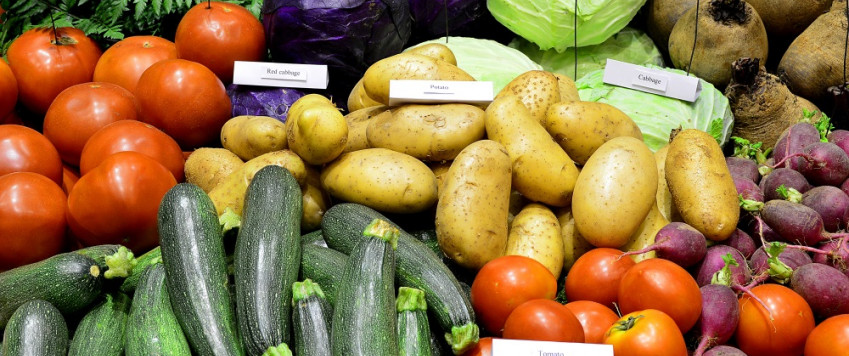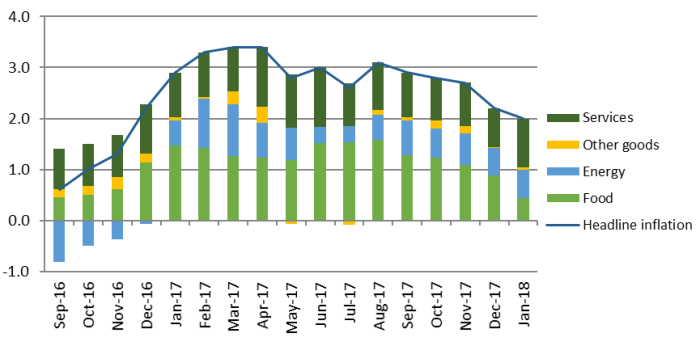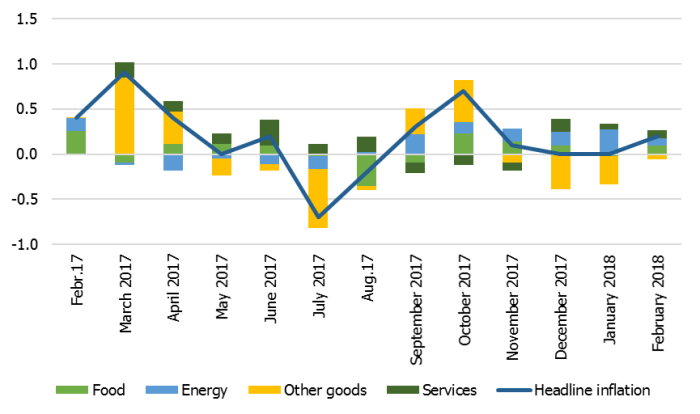February saw slower price rises

Chart 1. Annual inflation by consumption group (percentage points)

According to the data by the Central Statistical Bureau of Latvia, annual inflation stood at 1.8% in February, but the price level increased by 0.2% month-on-month. During the above month, both prices of goods, including food products, and services increased by 0.2%, 0.4% and 0.3% respectively. On an annual basis, prices of goods climbed at a slower pace (1.1%) compared to the previous months, while prices of services continued to go up at a faster pace, i.e. 3.6%.
Food prices continued to increase at a subdued rate in February (1.3%) in annual terms, mostly on account of the afore mentioned [1] downslide of the global food price level. However, the changes in food prices observed since January suggest an increase of 0.4%. Particular attention should be paid to vegetable prices. They elevated by a mere 0.8%, although February usually sees a price increase, e.g. by approximately 6%–9% since 2015. It is likely that the introduction of a lower value added tax rate on fruit and vegetables typical of Latvia affected the vegetable prices.
February also witnessed an increase in energy costs. Fuel prices were on average 0.9% higher in February than in January and 5.2% higher than a year ago. Heat energy was also more costly since January (0.2%). Meanwhile, following a seven-month rise, global crude oil prices were 4.2% lower in February than in January on average (63.5 USD per barrel of Brent crude oil). The overall situation has remained unchanged in the global oil market. Taking account of the current US oil production volumes, the impact of the restrictions on oil output imposed by participants of the Organisation of the Petroleum Exporting Countries is being reduced at least in the short term. As a consequence, it appears likely that the market is approaching equilibrium. This is also illustrated by projections for a further downward price development in 2018 [2], [3].
The annual inflation rate seen in February is expected to pick up in the months ahead [4]. The 2018 inflation will reflect changes in tax and minimum wage rates, as well as rising prices of goods and services triggered by wage growth in the labour market and a price increase for natural resources.
Chart 2. Monthly inflation by consumption group (percentage points)

Textual error
«… …»


